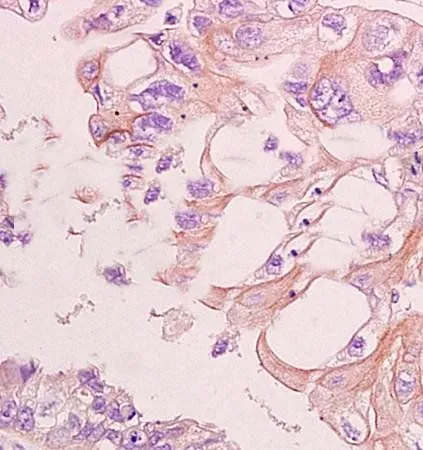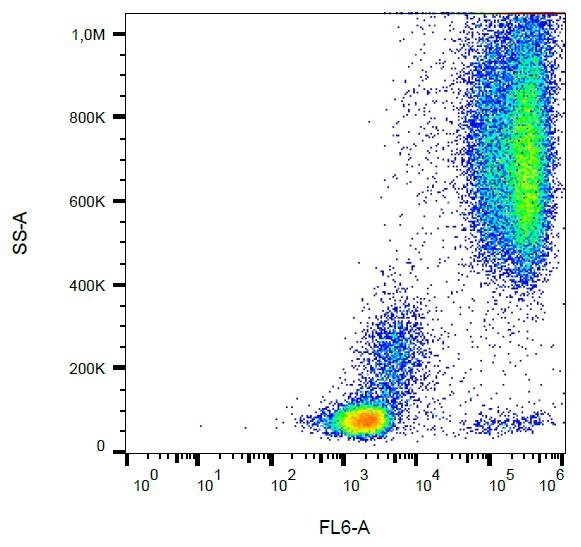CD24 antibody [ALB9]
GTX19704
ApplicationsFunctional Assay, Flow Cytometry, ImmunoHistoChemistry, ImmunoHistoChemistry Frozen
Product group Antibodies
TargetCD24
Overview
- SupplierGeneTex
- Product NameCD24 antibody [ALB9]
- Delivery Days Customer9
- ApplicationsFunctional Assay, Flow Cytometry, ImmunoHistoChemistry, ImmunoHistoChemistry Frozen
- CertificationResearch Use Only
- ClonalityMonoclonal
- Clone IDALB9
- ConjugateUnconjugated
- Gene ID100133941
- Target nameCD24
- Target descriptionCD24 molecule
- Target synonymsCD24 antigen (small cell lung carcinoma cluster 4 antigen); CD24A; signal transducer CD24
- HostMouse
- IsotypeIgG1
- Protein IDP25063
- Protein NameSignal transducer CD24
- Scientific DescriptionThis gene encodes a sialoglycoprotein that is expressed on mature granulocytes and B cells and modulates growth and differentiation signals to these cells. The precursor protein is cleaved to a short 32 amino acid mature peptide which is anchored via a glycosyl phosphatidylinositol (GPI) link to the cell surface. This gene was missing from previous genome assemblies, but is properly located on chromosome 6. Non-transcribed pseudogenes have been designated on chromosomes 1, 15, 20, and Y. Alternative splicing results in multiple transcript variants. [provided by RefSeq, Apr 2014]
- Storage Instruction-20°C or -80°C,2°C to 8°C
- UNSPSC12352203
References
- CD24 activates the NLRP3 inflammasome through c-Src kinase activity in a model of the lining epithelium of inflamed periodontal tissues. Guo W et al., 2014 Dec, Immun Inflamm DisRead more

![FACS analysis of human peripheral blood using GTX00597-07 CD24 antibody [SN3] (APC).](https://www.genetex.com/upload/website/prouct_img/normal/GTX00597-07/GTX00597-07_20191025_AP_006_101_w_23053121_689.webp)

